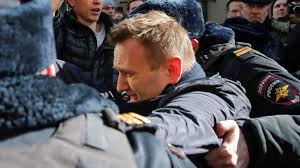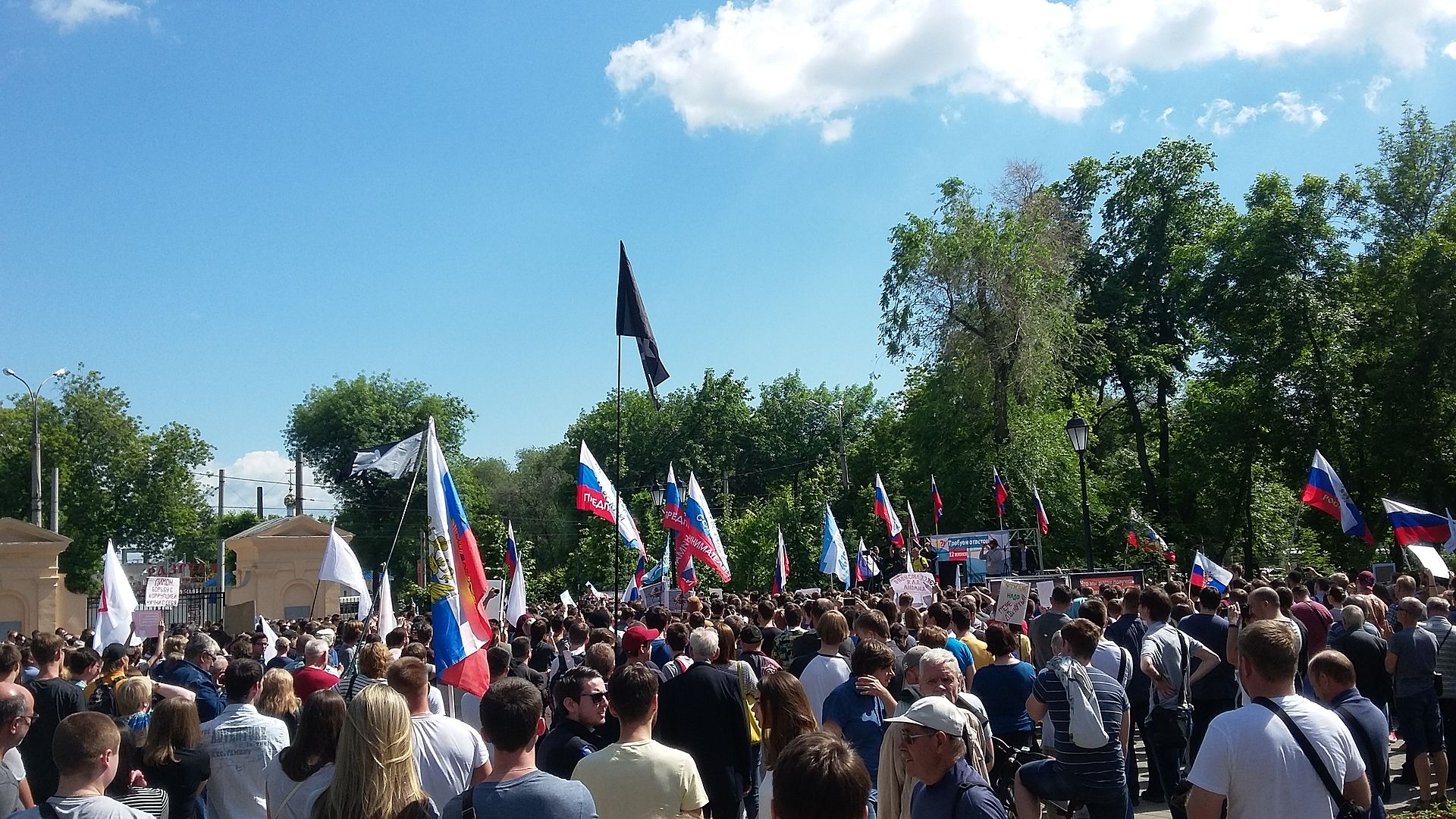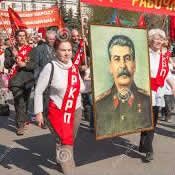Russia faced a new wave of popular protests on June 12 challenging the political status quo and denouncing widespread corruption. Contrary to what happened during the prior protests on March 27, the Russian government reacted this time by arresting hundreds of people, including Alexey Navalny, and hampering the structuring of street dynamics. Five PONARS Eurasia members, Pavel Baev, Mariya Omelicheva, Graeme Robertson, Tomila Lankina, and Andrey Makarychev analyze the different aspects of the recent protests.
Pavel Baev, Peace Research Institute Oslo (PRIO)
One already traditional feature of protests in Russia is that each one brings a surprise. The one in the prior March rallies was the high participation of students and teenagers. The surprise from the turmoil of last Monday, was the readiness of this youthful crowd to defy official bans and to challenge the enforcement of the rules invented by the authorities. Questions are raised about whether involvement of “children” in street clashes is a responsible policy, but Alexei Navalny is not really orchestrating this movement, but merely connecting with it. The real question is about the next surprise, and the one after it.

I can venture a guess that an unexpected turn of events might happen in St. Petersburg, not because of its revolutionary tradition, but because the critical mass of discontent in this huge urban center is not sufficiently contained by the powerful repressive apparatus (compared to the dense cohorts of “cosmonauts” in Moscow). Police may just refuse to follow orders to disperse a 20,000 to 30,000 strong crowd of protesters against a particular cause, and this could have a huge resonance across the country.
The next surprise is actually somewhat predictable: the official refusalal to allow Navalny to partake in the presidential campaign is nearly certain to trigger protests, which could turn out to be far larger and more protracted than the authorities calculate. They cannot grant him a platform to make his case as a presidential candidate, challenging Putin, who is yet to announce his intentions. The specter of student mutiny merging with the truck drivers’ strike and with pensioners rage is looming ever closer.
Mariya Omelicheva, University of Kansas
While the large scale anti-corruption rallies organized by opposition leader Alexei Navalny in March and May received broad coverage in the Western media, scores of smaller ongoing protests heating up across Russia’s “provinces” have received little attention. These brief and smaller-scale strikes organized by industrial workers, farmers, teachers, and employees of state-owned companies—Putin’s traditional base of support—offer a better measure of the extent of the voters’ frustration with the current political administration. The protests that have rippled across Russia’s periphery are different from those sparked by Navalny: the former are staged by more mature citizens fearing political instability and state persecution, while the latter gather Internet-savvy youth born after the fall of Communism. Still, the driving force for dissent across Russia is the same: the growing dissatisfaction with the current economic situation. The corruption message would have failed to strike a cord with large segments of the Russian population had it not been for the growing wealth disparity and soaring economic distress.
The recent economic crisis in Russia, caused by falling energy prices and economic sanctions, has had deleterious consequences for the Russian population. Russia’s GDP shrank by more than 3% in 2015. The same year, the value of its currency fell by 76% against the US dollar triggering inflation for consumer goods. The Russian government was forced to slash its spending on health care, education, infrastructure, and salaries in the government sector. While the government’s propaganda machine has been demonizing the West, Navalny named corruption as “the biggest reason for poverty.”
Whether or not the socio-economic protests rippling across Russia will converge with the opposition movement is yet to be seen. Putin’s approval ratings with regard to the management of the economy—technically a job of the prime minister—may be a good indicator. Up to now, some, but definitely not all, protests in Russia’s regions have levied blame on local governments and company administrations, and appealed to the president to intervene. Further, the forecasts from the IMF and World Bank seem to suggest that the worse of Russia’s recession is behind. The economy is expected to show moderate growth in 2017. When economic discontent wanes, or is temporarily tempered by arrears’ repayments, and if salaries and pensions rise in advance of the 2018 elections, so will the root cause of the protest.
Graeme Robertson, University of North Carolina

The anti-corruption protests across Russia on June 12, 2017, represent an intriguing new stage of the contest for control of the narrative between the Kremlin and the opposition as both sides prepare for the presidential elections of next year. The key question in advance of the scheduled protest was whether Alexey Navalny and his supporters could build on the momentum of the widespread protests of March 24, when thousands had taken to the streets in cities throughout the country. The answer, it seems, was a resounding yes. Despite the usual efforts on the part of the authorities to pre-manage turnout by imposing heavily restrictive conditions, somewhere between 50 000 and 100 000 people turned out in 154 cities. Moreover, this round of protests seems to have been even more heavily tilted than those in March towards young—sometimes very young—participants. The shifting age profile of protesters is a very worrying development for the Kremlin. After a decade or more in which protest politics were clearly uncool and patriotism was in, it may now be becoming fashionable and hip to be politically active and to protest abuses of power by the authorities. While it stills seem a stretch to imagine that 2018 could be Russia’s 1968, such a change in youth culture would be a real challenge for the Kremlin.
One of the most interesting parts of the challenge will be how young people will respond to the relatively high levels of repression that the authorities decided to employ this time. According to OVD-info there were at least 1720 arrests on June 12, including nearly 900 in Moscow alone. Even if most of the arrested were processed and released quite quickly, this number represents a significant increase in the resort to mass arrests on the part of the authorities. The question then arises, what happens when you start arresting teenagers and young adults en masse? Will they respond to repression by being cowed, the way “rational grown-ups” are supposed to? Perhaps. Or perhaps not. The reaction will tell us a lot about whether 2018 will be as boring a year in Russian politics as most people have predicted.
Tomila Lankina, The London School of Economics and Political Science
The June 12 protests in Russia echo recent political trends in Europe where youth disaffected with lack of economic prospects, soaring unemployment, and high student debt retreat into apathy and wallow in their disillusionment with established political parties and political class; embrace alternative political leaders and movements like Emmanuel Macron and his En Marche! in France; or indeed take to the streets and protest.
In the charismatic anti-corruption lawyer and activist Alexey Navalny, the young protesters see a fresh face untainted by association with either the ruling regime or the political opposition forces of the past whom the regime skillfully portrays as political has-beens or sell-outs to the West. Navalny’s physical injury that he sustained when anti-septic liquid was thrown into his face, leaving him partially blind, has put down to rest allegations of collusion with the Kremlin, reinforcing his image as a brave challenger of the political status quo.
The June protests represent a qualitative, not substantive change over the March protests, for by many accounts the demographic make-up of rallies remained similar but the extent and reach of the street contention has widened. The share of school-aged youth in these events may be exaggerated, yet it is this demographic that has attracted the most attention of the media and commentators. Some of the young protesters who have spoken to the media about their motivations to protest consider themselves the new generation of leadership in Russia’s political opposition; they have braved the streets despite looming school exams; and have spoken about awareness of the risks and sacrifices they are prepared to take. What is also impressive is the emphasis on rule of law that comes through in many interviews with the young protesters. The young activists have become skillful at identifying procedural violations in the sanctioning of rallies; and in the policing of protest; indeed, the wider anti-corruption protest frame has been couched in rule of law terms.
 It would be premature however to extrapolate the latest protest events to the sentiments of youth, broadly defined, at large. Young people in their 30s may not share the opinions and the risk-taking urges of the so-called generation Z who caught the media’s attention in the March and June protests; and those in their 40s, the generation of parents of the current teenagers, still relatively young, have been in fact branded as the generation of apathetic “vegetables” by some of the protesters. Indeed, those in their 30s and 40s have seen both the relative prosperity of the oil boom years of the early 2000s and the disillusionment with the course of Russia’s nascent democracy in the 1990s making many representatives of this generation cynical about joining rallies. Furthermore, the online chat groups facilitating the building of communities of like-minded activists like the informal “Protesting Moscow” online community may well be confined to the sophisticated young urbanites of large cities.
It would be premature however to extrapolate the latest protest events to the sentiments of youth, broadly defined, at large. Young people in their 30s may not share the opinions and the risk-taking urges of the so-called generation Z who caught the media’s attention in the March and June protests; and those in their 40s, the generation of parents of the current teenagers, still relatively young, have been in fact branded as the generation of apathetic “vegetables” by some of the protesters. Indeed, those in their 30s and 40s have seen both the relative prosperity of the oil boom years of the early 2000s and the disillusionment with the course of Russia’s nascent democracy in the 1990s making many representatives of this generation cynical about joining rallies. Furthermore, the online chat groups facilitating the building of communities of like-minded activists like the informal “Protesting Moscow” online community may well be confined to the sophisticated young urbanites of large cities.
These nuances of the demographic, regional, and socio-economic aspects of participation complicate the building of alliances across the various segments of Russian society. Navalny may well be precluded from contesting the 2018 Presidential elections, which are in any case likely to be heavily rigged in favor of the ruling regime. The growing socio-economic woes of ordinary Russians however may lead to a broader protest wave constituted of what the Economic geographer Natalya Zubarevich refers to as segments of the different “Russias”—the rural and urban Russias, the Russia of small and large cities, and of the various ethnic communities. The rigged electoral process is less likely to lead to a fundamental shift in Russia’s regime and political system than would the contentious politics of the vast swathes of Russia’s disaffected population.
Аndrey Makarychev, University of Tartu, Estonia
The current Russian protest movement is a deeply performative phenomenon. From Pussy Riot’s punk prayer to Piotr Pavlensky’s actionism, and from Ruslan Sokolovsky’s PokemonGo game in the church to Alexei Navalny’s anti-corruption symbolism (yellow duck toys and sport shoes as symbols of prime minister Medvedev’s profligacy) – the whole spectrum of protestation in Russia is impregnated with a spirit of cultural resistance and aesthetic contestation of hierarchies of power. The result is that authentic political relations are produced not within institutions, as most liberal thinkers would expect, but within public spaces-in-the-making that function as artistic sites saturated with politically meaningful—though sometimes hidden—signs of discord and disagreement.
For the French philosopher Jacques Ranciere, politics is about distinguishing “the visible and the invisible, speech and noise… Politics revolves around what is seen and what can be said about it, around who has the ability to see and the talent to speak.” Indeed, the state apparatus is bent on preserving its monopoly on what can be legitimately visible and what should remain in the shadow, what can be said publicly and what should be kept silent as inappropriate or redundant.

In other words, this logic is based on a strong belief that each place is functionally allocated for something indisputable; therefore, each deviation from this designation is considered as a challenge to the whole edifice of power. For example, neither Church nor the Red Square is supposed to be a place for public actions—but they are. Striking truck drivers are not supposed to measure and publicly discuss the quality of roads—but they do. Film-makers, actors and other celebrities are not supposed to speak about detainees at the “Nika” prize awards ceremony, but they did speak. The force of the “monstrations” project initiated by Artiom Loskutov in Novosibirsk is that it challenges the conventional understanding of police order—people are not supposed to expose meaningless slogans, but they amass to do so.
This explains a lot in Russian protests: politics emerges when it becomes obvious that certain groups (however numerically small they might initially be) behave beyond the police logic, thus challenging its very foundations. The trap of the police regime consists in its inevitable production of multiple zones of resistance. If an individual publicly reading Russian Constitution represents a danger to the police regime, then each deviation from the police order would keep creating spaces of tensions and thus evoke politicization from below. Flowers at the bridge where Boris Nemtsov was murdered became a source of political clashes. The green paint spilled to Alexey Navalny’s face became a marker of political identification[1], and the police detained people whose faces were painted in green color as a sign of tacit solidarity with Navalny[2]. Pavel Lobkov, a journalist from Dozhd’ TV, was recently detained in Moscow downtown wearing a penis-like camouflage when shooting an episode for his humoristic show; this was considered as illegal by the police authorities exactly due to the same logic: Lobkov’s attire didn’t fit in the established aesthetic order.
Apparently, each of these cases might be insignificant. Yet the more those who—for multiple reasons—contest the police order from its margins, the stronger political momentum their efforts might ultimately produce.










